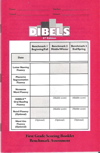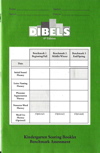Please visit the U.S. Department of Education website for more information in No Child Left Behind and Reading First.


DIBELS, 6th Edition
Copyright 2003 by Sopris West: Longmont CO
Copyright 2003 by Sopris West: Longmont CO
| General Overview | |
| Reading First began as part of the No Child Left Behind
Act of 2001. The Reading First program aims to meet a key goal of
NCLB; all students should be reading on grade level in third grade by
the year 2014. The Reading First program is funded through federal
grants and stipulates
assessment measures which are used throughout the year.
Currently, Franklin Magnet School is in it's final year of a 6-year
Reading First grant. Please visit the U.S. Department of Education website for more information in No Child Left Behind and Reading First. |
|
| What does it look like at Franklin School? | |
| At Franklin School, Reading First TA's push into classrooms and work with small groups of children (usually four to six children per group). This time spent with students is considered an intervention. Interventions vary depending on the needs of the students. Different programs that might be utilized include Wilson FUNdations, Road to the Code, and other guided reading strategies. The lessons designed for intervention groups are based on scientific research and proven methods to improve overall reading skills. | |
| How are groups decided? | |
| Groups are decided based on the DIBELS (Dynamic Indicators of Basic Early Literacy Skills) Assessments conducted three times per year (September, January, May). Students' scores are analyzed according to three levels: Benchmark (at level), Strategic (just below benchmark), and At Risk (far below benchmark). Studies have shown that if children have not learned to read by third grade, they will continue to struggle and may never reach fluency in reading. Therefore, it is important that our reading groups meet everyday and lessons are planned according to the needs of the group. |   DIBELS, 6th Edition
Copyright 2003 by Sopris West: Longmont CO |
| Go to My Reading Groups | Check out the Featured Reading Section | View Ways to Improve Your Reading Skills |
| Return to Rebecca Winterson's Homepage |